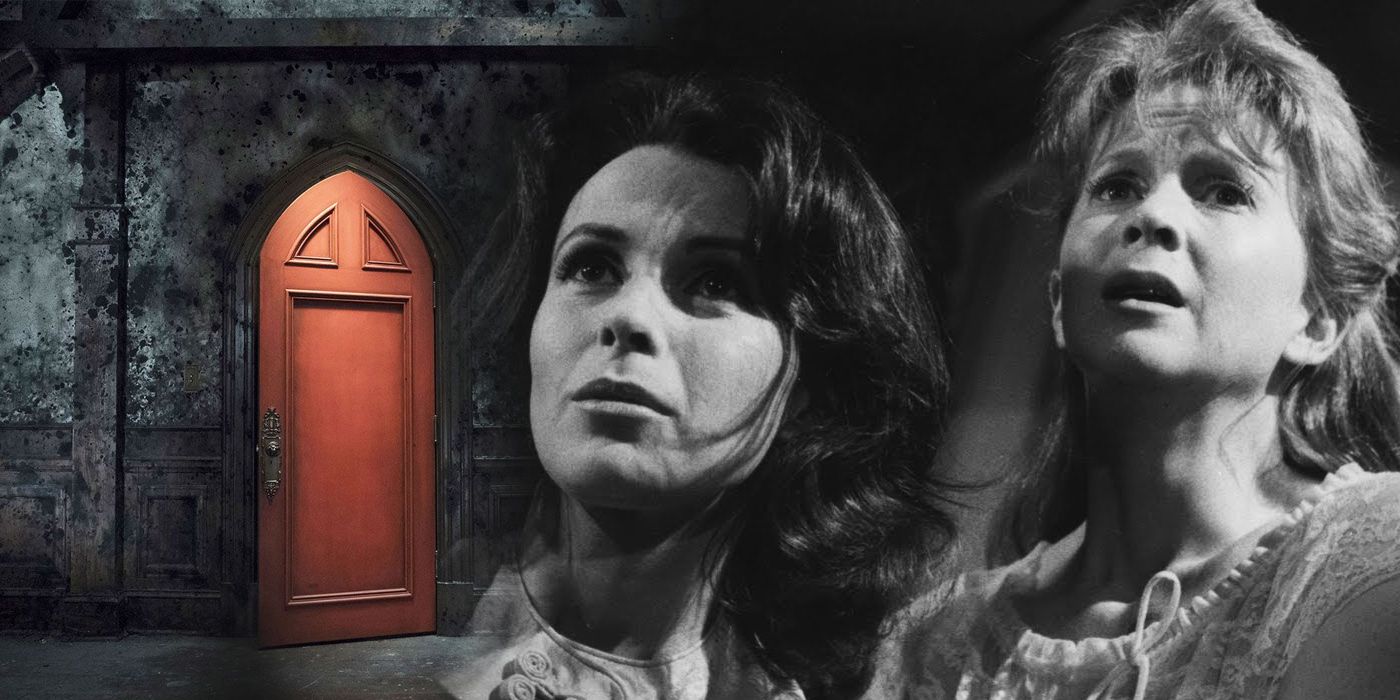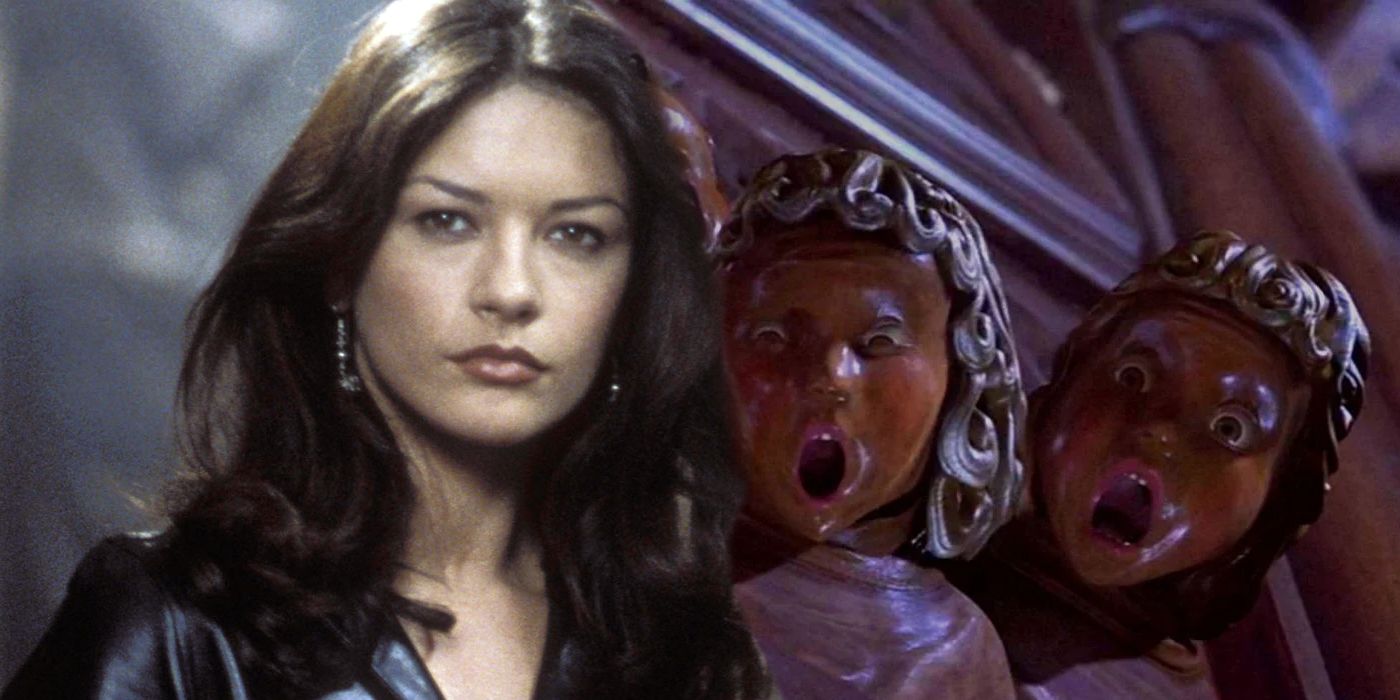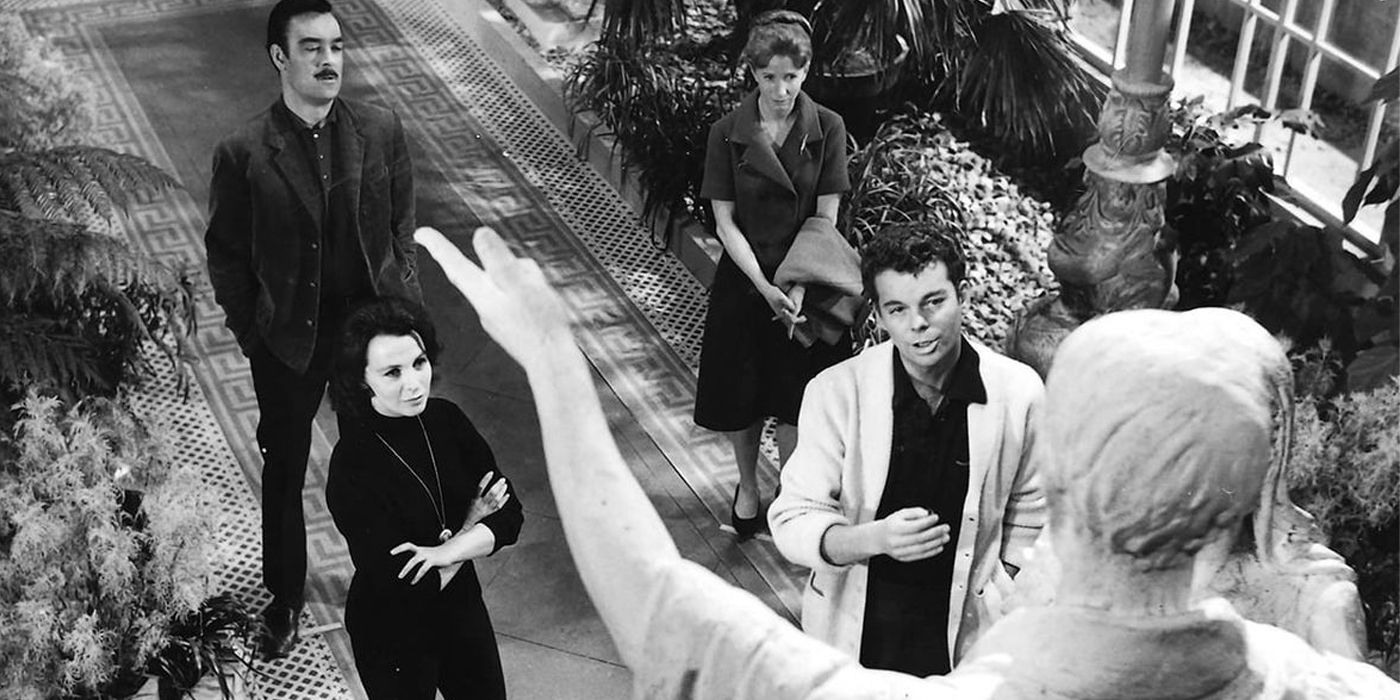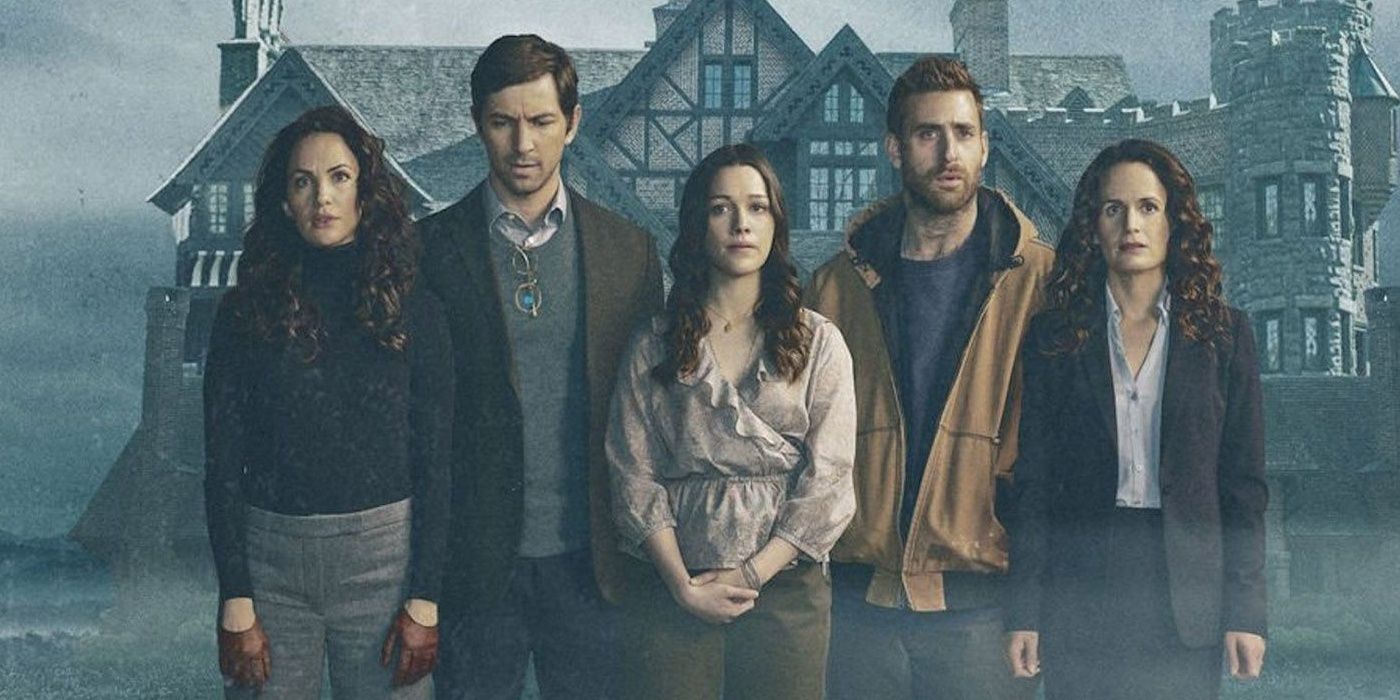All three versions of The Haunting of Hill House are chilling, making it difficult for one to determine which is the best — and which is the worst — retelling of the popular novel. A terrifying story of a ghastly manor, an unhinged woman, and a shocking suicide, The Haunting of Hill House is a thrilling ghost story that focuses on evoking psychological terror and suspense rather than relying on traditional horror tropes. The story has been adapted several times since the book was first published in 1959: The Haunting of Hill House has been told on stage and even on the radio, but the most well-known versions (at least to contemporary American audiences) are the two feature-length movies and the Mike Flanagan Netflix television series.
Netflix's 2020 hit The Haunting of Bly Manor is the follow-up to their successful horror miniseries The Haunting of Hill House (in a way, making The Haunting an anthology series). Both spooky shows are adaptations of famous ghost stories: while Bly Manor is an adaptation of the novella The Turn of the Screw, written by Henry James, the first series, The Haunting of Hill House, is an adaptation of the Shirley Jackson book by the same name.
The first screen adaptation of Jackson's book was simply titled The Haunting and debuted in 1963. The horror classic is widely considered one of the best horror films of the period, with Martin Scorsese once bestowing on it the honor of being the scariest movie of all time [via Indiewire]. The movie was remade in 1999 — with the same title — but the story was altered to be more in line with '90s sensibilities. When Netflix created its own version in 2018, it used the original full title, but altered many of the plot points, keeping only the skeletal aspects of Jackson's novel, such as character names and the basic setting. All three The Haunting of Hill House adaptations offer something different and unique to horror fans, and none are highly-faithful to the book — which allows them to each stand on their own. However, there are certainly aspects that do and don't work in these ghost stories, and not all three versions were created equal.
3. The Haunting (1999)
The 1999 remake The Haunting is not a terrible movie — Catherine Zeta Jones's vampy take on Theo is fun, if not believable, and the set design is genuinely stunning — but it is certainly the weakest adaptation of The Haunting of Hill House to date. The Haunting (1999) removes the psychological horror elements in the original movie (and the novel), and instead uses gore and big-budget CGI effects to thrill audiences. While in the novel, it's possible to read some of the events as being the main character's delusions, in the 1999 film, the house is literally brought to life and is actively killing its inhabitants. There is no ambiguity in this movie.
Directed by Jan de Bont, who also directed Speed and Twister, The Haunting (1999) serves as a poignant reminder that action thrillers and paranormal and/or psychological thrillers are very different subgenres; more Michael Bay than Alfred Hitchcock, de Bont's approach to the material is unsuccessful in scaring audiences, offering more spectacle than suspense. The movie, unfortunately, has all the trappings of big budget horror movies of the late '90s and early 2000s: an over-reliance on CGI, glossy production, under-developed scripts, and no subtlety. The star-studded cast was a misstep — Owen Wilson's disingenuous cries of "damn you!" and subsequent death is one of the movie's most unintentionally-hilarious scenes — which was only made more clear by the characters' slow, wooden direction. The Haunting is a fun romp in the supernatural, and is genuinely entertaining, but it offers more laughs than scares and thus doesn't hold up to the other adaptations.
2. The Haunting (1963)
The British horror film The Haunting (1963) is the most faithful adaptation of Shirley Jacksons' novel, as it not only follows the basic plot, but it also maintains some of the psychological horror and ambiguity found in the original. In the novel, a researcher, Dr. John Montague, rents "Hill House" for a summer in the hopes of discovering scientific proof of the supernatural. He invites guests to stay with him who have experience with such phenomena, but only two show up: Theodora (Theo) and Eleanor (Nell). Luke, the young heir to the house, stays with them, and the four form a friendship. Overtime, inexplicable events begin to occur to all of the residents — although "Nell" appears to be the focus. The novel hints that she may be delusional, or that her own telekinetic abilities are causing the occurrences.
The Haunting (1963) follows the basic plot of novel, but removes some of the ambiguity. For example, in the end when Nell drives her car into a tree, she is shown not having control of the wheel. Then when her body is discovered, the professor determines that the house wanted her dead and was to blame. In the novel, the scene is left open for interpretation — it's not even clear if Nell is dead from the crash. What is clear is that she intentionally drives the car towards a tree, but before the crash has a chilling moment of clarity — and fear.
The movie also adds some interesting subtext not found (prominently) in the novel. Nell is not only shy and isolated, but is plagued by survivor's guilt — and may have indirectly killed her mother (at the very least, she's guilty of ignoring her mother's calls for help right before her death). There's a "queer" love triangle between Nell, the married professor, and Theo — a theme that's actually quite common in classic horror movies (i.e. The Old Dark House). The movie heavily implies that Theo is a lesbian, and that there is sexual tension between her and Nell. Meanwhile, Nell is clearly in love with the professor who, feigning ignorance of her affection, does little to discourage the attention — despite him being happily married. Nell is thus the "monster" for being torn between two "perverse" desires, which contributes to her declining mental state and eventual suicide.
The Haunting is, in many ways, a masterpiece: it's the sort of movie that feels truly timeless, and can be revisited over and over. The problem with the movie, however, is that while it artistically stands the test of time, its thrills diminish as tastes change. Scorsese was perhaps too generous in deeming it the "scariest" movie of all time; contemporary audiences would likely find the pacing slow and the action too subdued to be genuinely frightening. Regardless, The Haunting (1963) is still essential viewing for any fan of classic horror movies.
1. The Haunting of Hill House (2018)
Netflix's The Haunting of Hill House is a loose adaptation of the novel, incorporating various elements from Jackson's book (and the 1963 movie) into its new, original story of a family surviving a horrifying summer at Hill House and the long-term trauma from the events. The 10-episode series features an ensemble cast and a non-linear plot that alternates between two timelines, culminating in a thrilling climax that reveals the true horror of Hill House and its "Red Room." The series was met with widespread acclaim, with critics praising its story, the acting, and the direction.
Unlike the 1999 remake, The Haunting of Hill House uses hidden ghosts and other subtle tactics to evoke unease in its viewers, slowly building a mounting tension that never really dissipates. The pacing is perfect for this sort of story: there are enough "big" thrills to keep viewers engaged, but not so many that audiences become numb to it. The atmosphere is both creepy and sad, and not only are the characters fully-realized, but the audience genuinely cares about what happens to them — a difficult feat for horror to accomplish, especially when there's an ensemble cast involved (compare that to all the disposable characters in American Horror Story).
Of all the versions of The Haunting, this one by far has the highest stakes: this isn't the case of one unhinged woman possibly losing her mind, or a cartoonishly-powerful house that one should just simply run away from (why the characters in the 1999 movie stay in the house as long as they do defies all logic and instinct). Instead, The Haunting of Hill House tells the story of a family, stuck in a bad circumstance, and then unable to distance themselves from it before tragedy strikes — the kind of story that even a steadfast skeptic could find relatable, especially in our current, troubled times.




